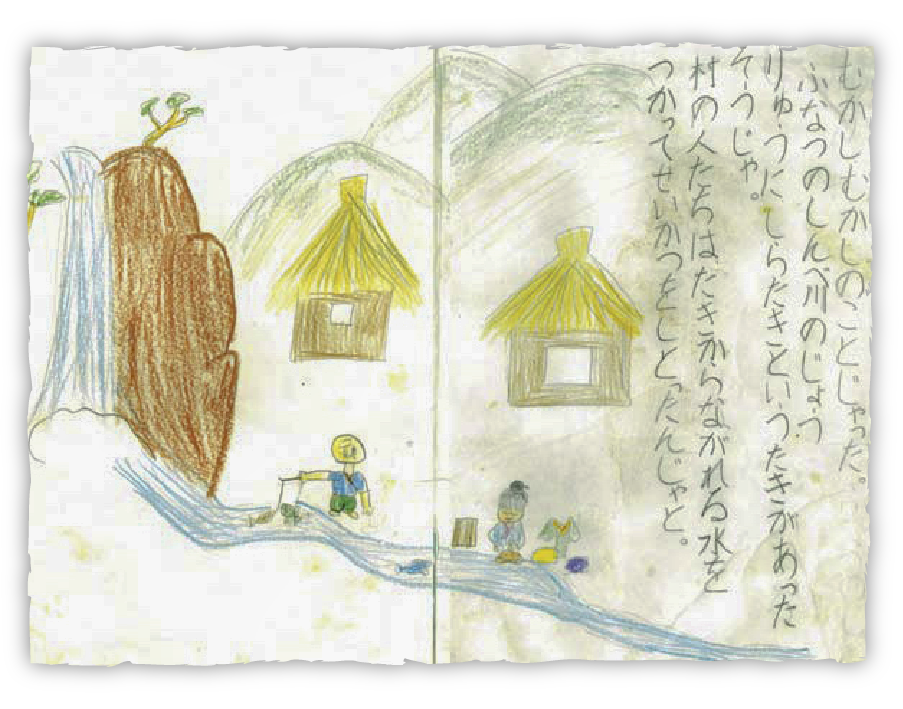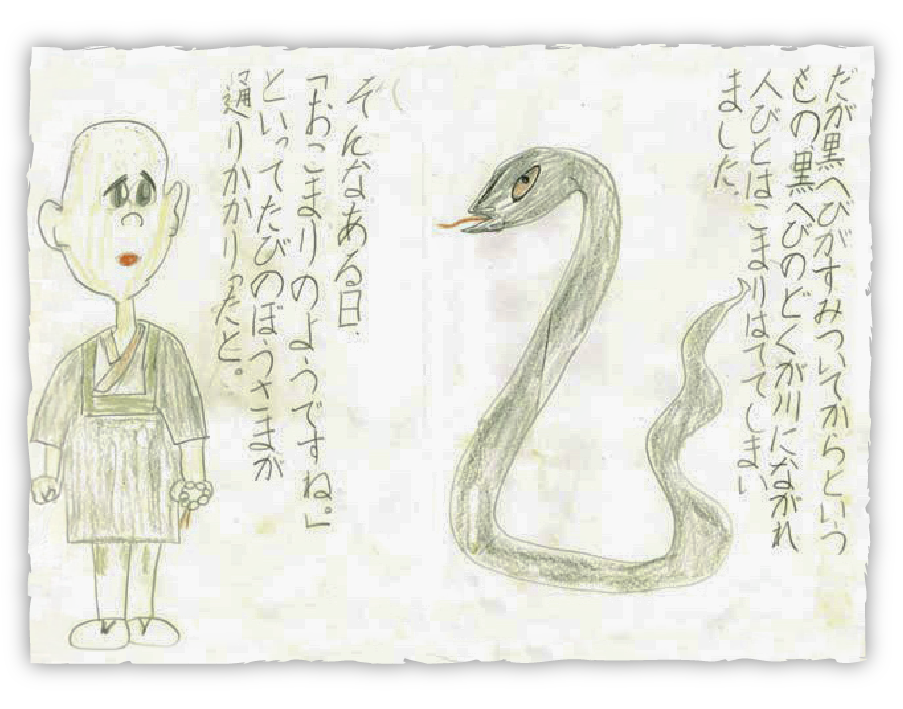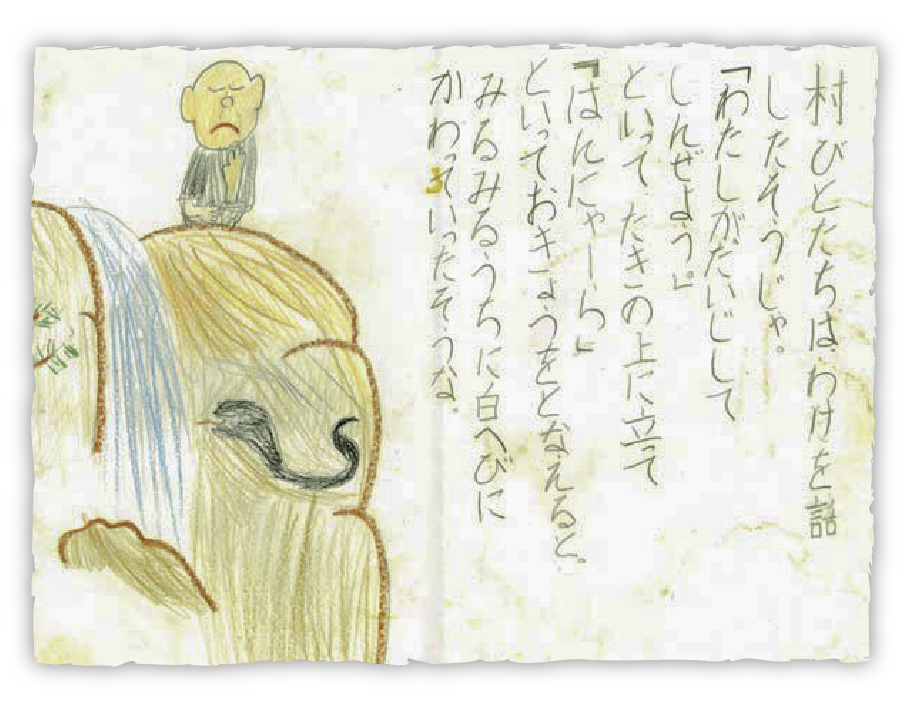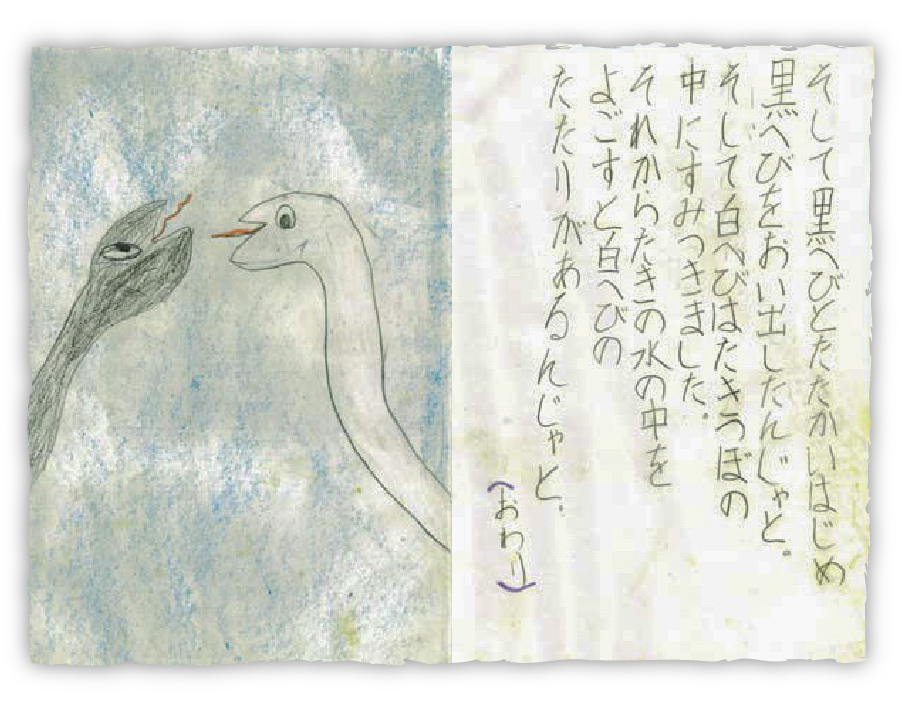- HOME
- White Snake
The Story of Shirataki-san
白瀧さんの白蛇
Shirataki-san has long been the subject of local legends. In Funatsu Town, it was common for grandparents to share stories about Shirataki-san with children.
One such tale was turned into a picture book by a local elementary school girl about 30 years ago. We’d like to introduce this story and, alongside it, explain the origin of Shirataki-san.
Once upon a time…
Upstream of the Shinbe River in Funatsu, there was a waterfall called Shirataki. The villagers lived their lives using the water that flowed from the falls.

But one day, a black serpent took up residence in the area. Its venom contaminated the river, and the people were thrown into great distress. Then one day, a traveling monk passed by and said, “It seems you’re having some trouble.”

The villagers told him what was happening.
“I shall take care of it,” the monk said.
He climbed to the top of the waterfall and began chanting sutras, saying “Hannya-ra…”
As he chanted, he gradually transformed into a white serpent.

The white serpent then fought the black serpent and drove it away.
Afterward, the white serpent settled in the basin of the waterfall.
Since then, it’s said that if you pollute the water, you’ll incur the curse of the white serpent.
(The end)

Explanation of the Legend
It’s believed that this story dates back to the Heian period (794 to 1185). At the time, this region was frequently troubled by outbreaks of disease and accidents. In the picture book and the oral tradition, such troubles were represented by the black serpent. The “traveling monk” in the story is described variously as a Buddhist monk or a yamabushi (mountain ascetic), but was likely a figure similar to a spiritual practitioner or feng shui master by today’s standards.
Because this area lies close to the sacred Ise Grand Shrine, it has long been considered a spiritually powerful land. The monk is said to have recognized that the region’s misfortunes were caused by a disturbance in the land’s energy flow, and at the very spot where Shirataki-san now resides, he performed rituals to restore the natural currents of spiritual energy. That is how Shirataki came to be revered as Shirataki-san.
In feng shui, the land’s energy lines are known as “dragon veins” (龍脈). The white serpent likely became a symbol of this energy—an easily understood and fitting image for the people of the time. From then on, the area flourished peacefully under the protection of Shirataki-san. As told in the stories of local Zen monks and residents, people here have long been known for their vitality and longevity.
As mentioned in the picture book, up until just a few decades ago, the river flowing from Shirataki-san was known locally as the Shinbe River (神辺川). (Though it’s now officially called the Teratani River (寺谷川) due to a nationwide renaming of geographic features.) It’s unclear exactly when the name Shinbe River came into use, but it’s believed to have originated from this very legend.
By passing down this story and treating the entire mountain as sacred ground, the people of the region have continued to uphold the lesson: “Do not disturb the energy of the land.” It’s possible the Zen monks also understood this and lived as guardians of the site.
For visitors who come to pay their respects to Shirataki-san, we encourage you to tune in to the flow of energy here and entrust yourself to it. We believe you will feel something deeply pure and uplifting. For the same reason, we ask that you do not leave behind trash or belongings when you visit.
